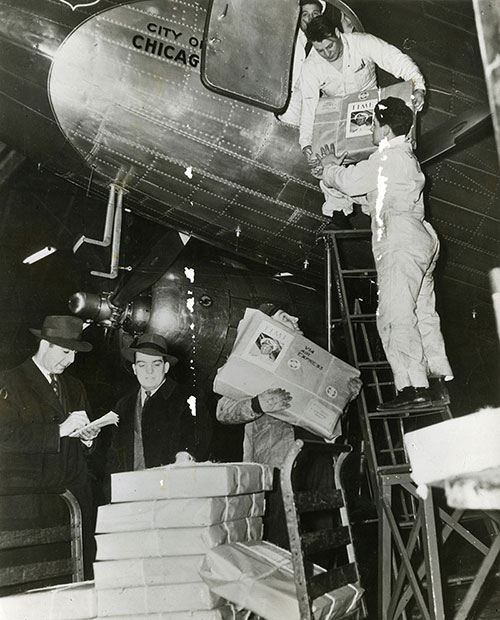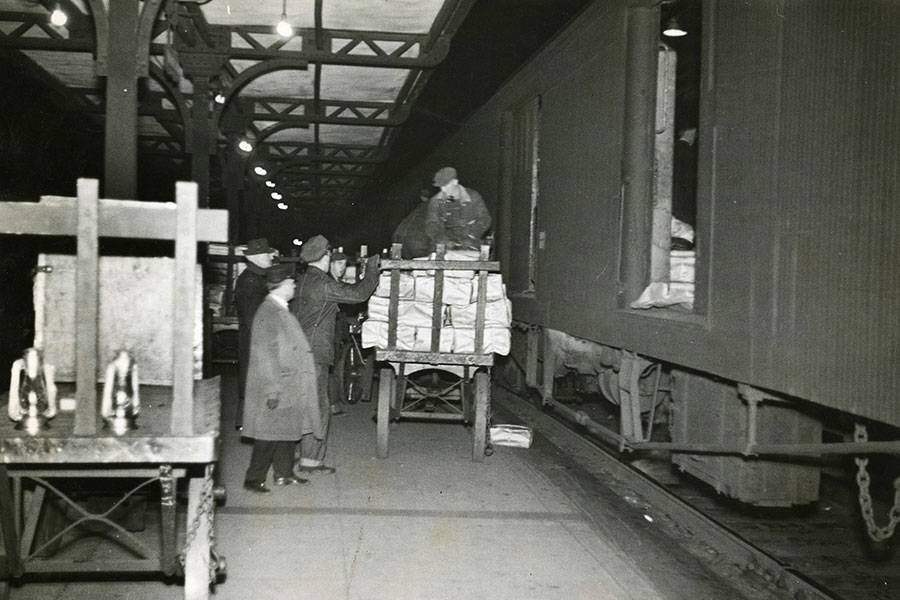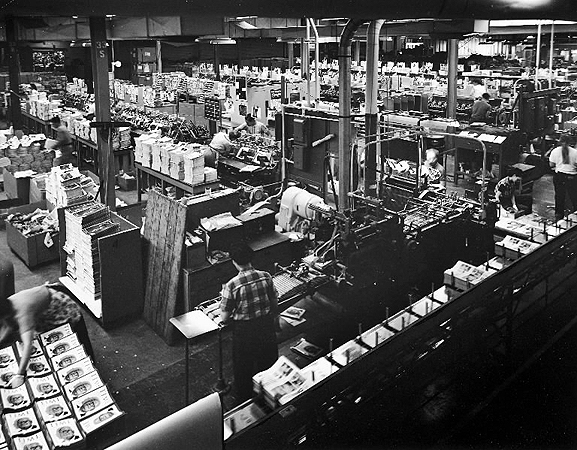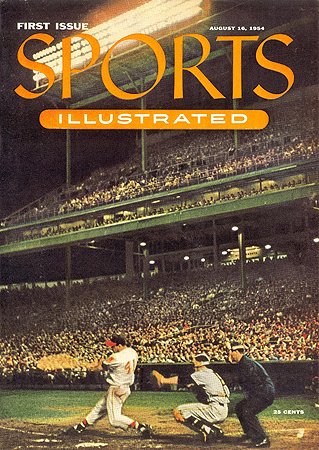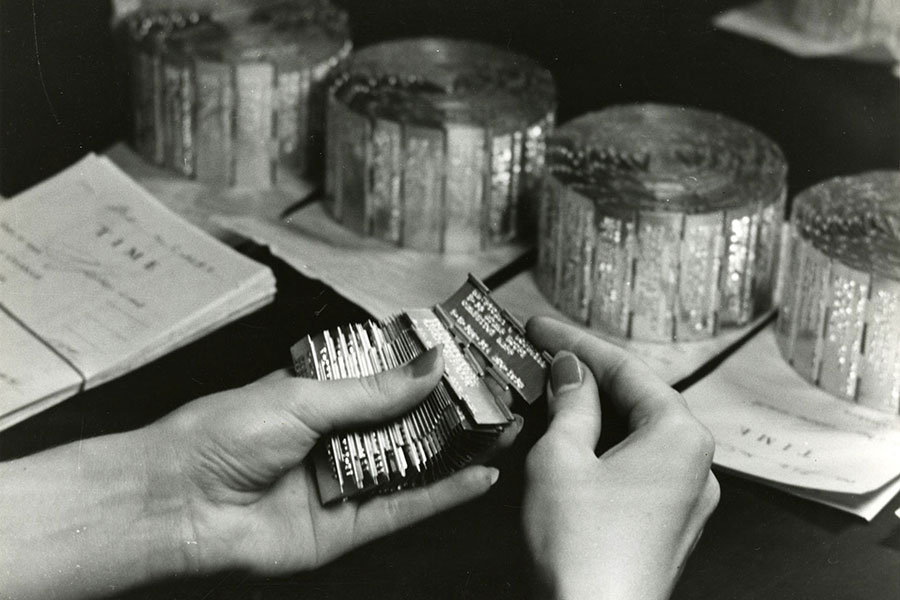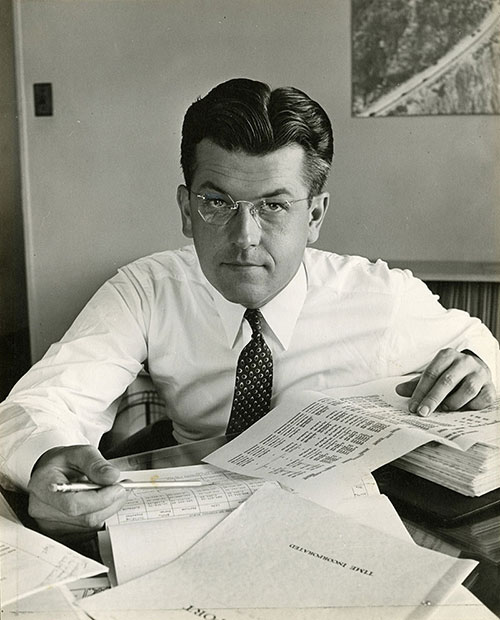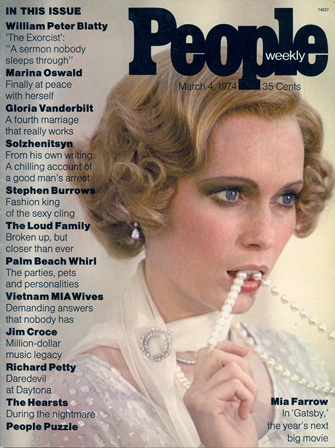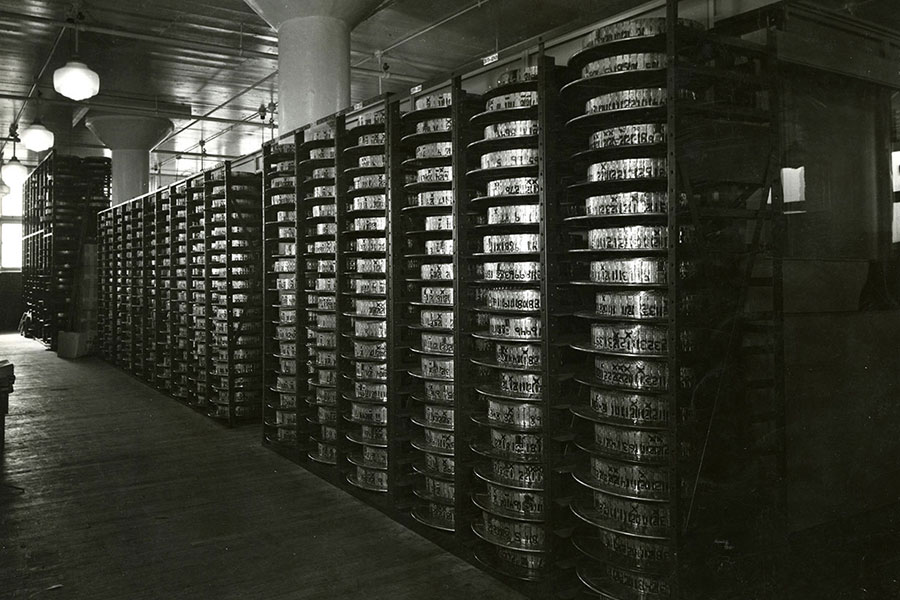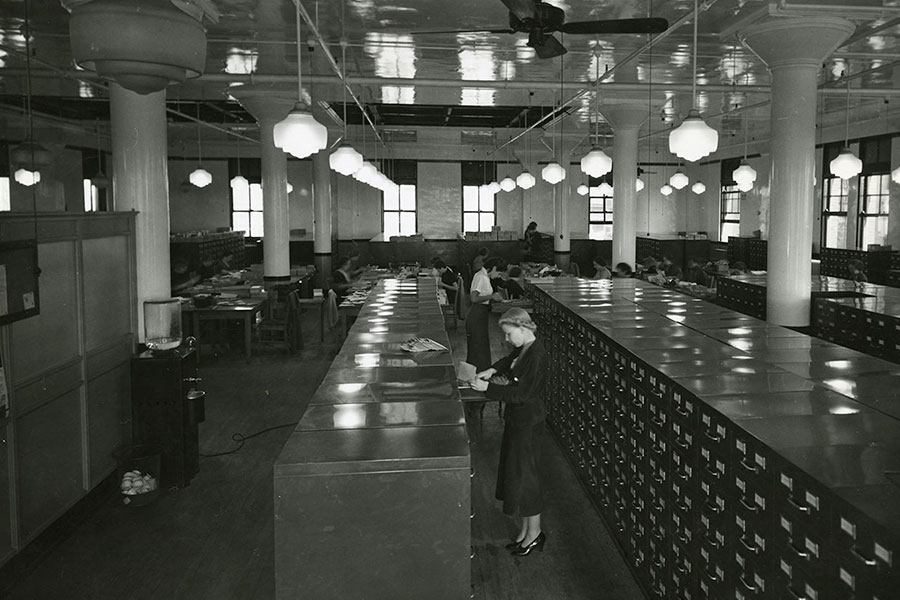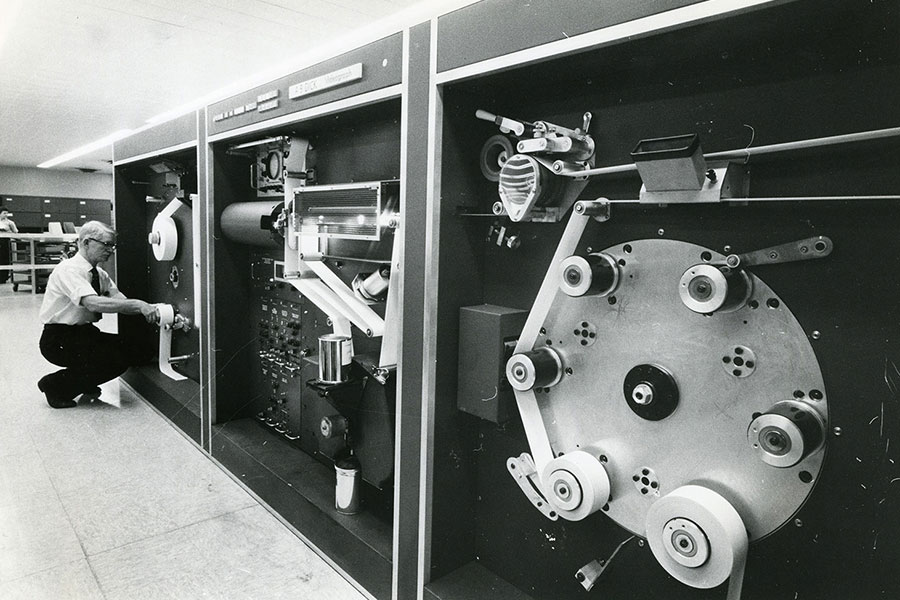[music]
00:08
And Luce and Haddin's prospectus for Time,
00:11
they said that they were not interested in
00:13
how much information they put between the covers,
00:17
but how much they got into the minds of their readers.
00:21
That has been in the DNA of Time Inc. from the very beginning.
00:29
Luce and Haddin instilled the idea that you could have an opinion.
00:33
And I think you're always going to have people
00:35
who disagree with you when you come down on one side or the other.
00:39
But anytime you can influence the national conversation I think it's important
00:46
I've spent a lot of time in the Time Archives over the years.
00:49
The fun thing is feeling like a colleague to all of those people who came before.
00:54
The technology has changed enormously, the climate has, the new environment has.
00:58
But in some basic way, we are all doing the same thing,
01:01
telling the stories that we think are most important,
01:04
most interesting, most surprising.
01:05
There's not a day that goes by that I don't learn something new
01:10
in these files about the history of this company.
01:13
For instance, Time has had an enormous influence on the English language.
01:19
We gave the world words like socialite, racketeer,
01:23
homophobia, op art, bobby socks, or televangelist.
01:29
We also introduced the term World War II.
01:37
Part of the genesis of our magazines was the desire
01:42
to inform the public what war was all about.
01:47
In 1969 Life published a picture of every single soldier who died during the week.
01:55
I think this really helped turn the tide
01:58
of public opinion against the war in Vietnam.
02:08
I grew up reading Time Magazine's journalism about Vietnam.
02:12
And I'm so when I went to Baghdad as Time's correspondent three,
02:15
I knew I was part of this legacy.
02:16
There was this continum going back 70 years.
02:20
There's a tendency these days to pretend like there's no war going on.
02:24
At Time our job is to make people pay attention
02:28
to things that may not be pleasant, may not make them feel good about themselves,
02:34
but are absolutely vital because these are wars
02:38
that are taking place in their name and they have to pay attention.
02:43
Henry Luce thought that the American public has the right
02:47
to see the wages of war, the meaning of war.
02:51
And I think that continued with the coverage of the Civil Rights Movement.
03:02
Time Inc. magazines had a well-deserved reputation for fairness,
03:06
objectivity, and all the rest.
03:09
In the civil rights struggle our objectivity slipped, thank God.
03:15
You couldn't be neutral in this.
03:17
This could not continue.
03:19
And Life Magazine photographs did more to bring
03:23
that incredibly significant change in the South
03:27
than any other medium in the country.
03:43
From the very beginning Briton Hadden had Time Magazine trying to cover every single lynching.
03:52
Life Magazine back in the 1950s did a groundbreaking expose of segregation.
03:58
The Sports Illustrated series in the 1960s,
04:02
The Black Athlete: A Shameful Story,
04:05
generated the largest amount of mail that the magazine had ever received.
04:10
I find the material in the archives endlessly fascinating.
04:15
This collection documents the 20th Century into the 21st.
04:19
But one of the fascinating things that I've come across in the archives,
04:24
certainly the Zapruder film is one.
04:28
I was chief of the LA bureau for Life.
04:31
Colleagues shouted it to me, Dick, Kennedy's been shot in Dallas.
04:35
We landed and our stringer said I heard that there
04:38
is a businessman who is out there in Dealey Plaza
04:42
with his home movie camera and he got the whole assassination.
04:48
I couldn't get anything but his name Abraham Zapruder.
04:52
I picked up the Dallas phone book.
04:55
Thank God it was a "Z".
04:57
I called and this tired voice answered and I said,
05:01
am I the first reporter to call you?
05:04
He said, yes.
05:07
I went to his office.
05:08
He said, all right come on in,
05:09
I'm about to show the film to two Secret Service agents.
05:12
So we went into this little room.
05:15
He beamed it up against the wall and the three of us,
05:18
two grizzled Secret Service agents and me,
05:22
we just went, "uhh".
05:41
It was the single most dramatic moment in my entire career.
05:47
And I thought, there is no way in hell that I'm going
05:50
to leave this man's office without that film.
05:54
There are very few days in American history where in one day
05:58
something happens that changes the way you look at the world and America's place in it.
06:03
The cliche as that you can have anyone where they were
06:06
the day they heard about the Kennedy assassination
06:08
and decades later they could still tell you.
06:11
The same was true of September 11.
06:16
There was a real question about, are we at war now?
06:19
And if so, with whom?
06:21
And what was that going to mean?
06:24
The greatest war photographer of our age is Jim Nachtwey.
06:27
And it happened that Jim was at home on September 11.
06:30
And so of course, he grabs his cameras and runs downtown
06:33
and takes pictures that are so extraordinary in capturing
06:38
both the heroism and the horrer of that day.
06:41
I think himself narrowly missed being burried
06:43
with a bunch of firemen as one of the buildings
06:46
came down and they hurled themselves into a doorway
06:48
as the debris comes over them.
06:53
Having someone like him photographing it,
06:56
really brought home to us, I think internally, oh,
06:58
the war is here now.
06:59
If Nachtwey is shooting it, then,
07:01
the war is now in lower Manhattan.
07:05
You know we presumptuously say that we write the first draft of history.
07:08
That was never more true than on that day.
07:13
I think the role of Time Inc.'s magazines is
07:16
to really explain society in the world to our readers.
07:21
The past couple of years there was so much going on
07:24
around them that affected their lives,
07:26
they were losing money in their stock market accounts, their 401Ks.
07:30
Economically the country was falling apart
07:33
people were losing their jobs and
07:35
I feel like we really rose to the occasion.
07:42
It's one thing to go in there cover the unfolding tragedy and then leave.
07:48
Very early on we decided that was not how we were going to do it.
07:50
We were going to remain focused on the story for a long time.
07:54
For the first time on a foreign assignment,
07:57
I was accompanied by a video editor.
07:59
We were editing on the fly, sending stories in,
08:01
putting them up on Time.com, and getting instant response from readers.
08:06
Again these are new kinds of commitments over
08:09
and above the the enormous commitment we've always given to big stories.
08:13
And the fact that we're able to do this
08:15
in a very difficult economic environment tells you
08:19
something about how serious we are.
08:22
Over the last 30 or 40 years our focus has broadened
08:27
so much to cover things that are more of interest to women.
08:32
In 1947 Life devoted 14 pages to the changing women's role.
08:39
It showed one week's work for a housewife.
08:42
It so clearly dispelled the comic myth
08:47
of the housewife sitting at home eating bon-bons.
08:51
This was a 100-hour work week.
08:54
In the summer of 1973, Andrew Heiskell
09:00
who was our chairman of the board sent a printed dummy
09:04
of People Magazine to Clare Booth Luce, Henry Luce's widow.
09:09
And it arrived just as she was heading over to the beauty palor
09:14
and it immediately caught the attention of her hairdresser and the manicurist.
09:17
And she wrote back transcribing the giddy back and fourth.
09:21
She said it was destined to be read in every hair dressing salon,
09:25
every doctors office, because it was just like eating peanuts.
09:28
She couldn't stop once she began.
09:29
When we launched the magazine were promising advertisers
09:33
that we would sell a million copies every week.
09:36
And I was frantically trying to pick covers
09:38
that would sell on the newstands.
09:41
Telly Savalas was in a show called Kojak, a big,
09:45
big hit that summer.
09:47
And we shot Telly from the waist up.
09:50
I mean this was just a great big blob of glistening flesh.
09:55
We must have gotten a score of letters from women saying,
09:59
Okay, you showed me the top half of Telly,
10:02
when are you gonna show me the bottom half?
10:06
We didn't quite understand but, it's been happily making money ever since.
10:18
These magazines are shorthand for what's on the public's mind.
10:24
If there is one word that sums up everything would deliver to the reader,
10:28
it is understand.
10:29
You can get news anywhere, but if you want to understand
10:32
what's going on, that's what we want.
10:34
And people, 10 years from now, 20 years from now,
10:37
100 years from now, are always going to want that.







